19 Questions you should ask before buying leather bags online
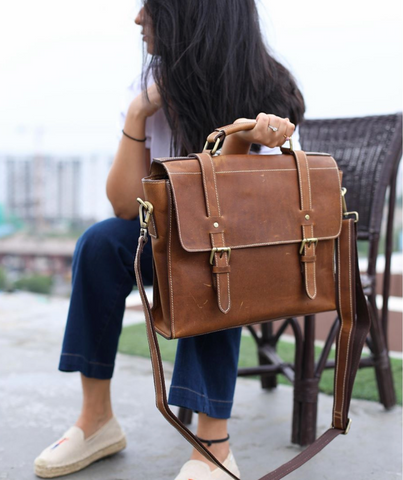
Who doesn’t want a nice luxurious leather bag? Everyone, right!
But, to make your purchase a smooth one we have listed 19 questions for you. 19 questions… kinda seems a lot, but trust me on this. Once you ask these questions, I guarantee you are going to have the best leather bag known to humans!
Here they come:
1. How is the leather?
First and foremost, which leather is considered to be of the highest quality?
The best grade leather is full-grain leather. It is the toughest and most durable leather kind, and it matures nicely.
Top-grain leather is comparable to full-grain leather in that it has a consistent appearance.
But wait, how can one tell the difference between real and fake leather?
To some extent, genuine leather absorbs water. It is fake leather if the water drips off. It might be fake leather if the texture is excessively smooth, greasy, or plasticky.
If you've ever used leather, you're aware that it has a distinct, rich odour. This smell will not be present in a faux leather product.
2. Tanning Process
Tanning is the procedure of converting animal skin into leather, beginning with the removal of hair from the skin, followed by the cleansing of the carcass from the skin, preservation of the leather, and finally colouring it. All of these procedures have an impact on the final leather quality.
The leather should be sourced from a tannery that complies to quality requirements. Many aspects should be taken into account by the firm that manufactures the leather before it is rendered usable.
If you choose to buy leather produced at a reputable tannery that uses clean technology with little environmental effect, it is beneficial for both you and the globe.

3. Country of Origin and Making
The sourcing of the leather frequently influences the quality of the bag. Italy, England, France, and the United States are examples of countries that consistently manufacture high-quality leather. History demonstrates that those countries have a successful previous record of tanning leather.
But these days, caution is required, particularly when it comes to labelling. Some firms aim to capitalise on the "Italy" image by conducting all of the labour in another nation and only polishing the leather in Italy. The product is then stamped as Italian leather, which allows them to sell chrome tanned leather or low-quality leathers at greater costs.
4. Durability and Handwork
So, when would you like it to deteriorate?
Never, do you think? So make sure you purchase a sturdy bag rather than a fragile chunk of leather that will only last you three months.
You want your bag to be as durable as possible. Here are some things to look for in order to do so:
- Quality of stitching
Analyse all of the stitching to ensure that it is of high quality. If it appears shoddy and unreliable, disregard it.
You just want the nicest bag you can get your hands on, and you don't have time to bother on shoddy stitching that will cause your bag to break apart in less than six months.
- Quality of Inside Lining
If you're in a real store, unzip the bag, inspect the contents, and make sure everything is in order!
Don't be scared to move your hands about to see whether everything is in position!
A few minutes spent on quality control can ensure that you receive a bag that will last a decade rather than just a summer.
- Handles and straps
This is a significant one. Consider placing your laptop in a beautiful new bag, only to have the straps break apart and the bag fall apart as soon as you leave the house.
You might lose all of your photographs and movies on that laptop at that point! Do you really want to take the risk of losing your priceless memories? No!
Check to discover how sturdy and long-lasting the straps and handles are!
- Re-emphasize on the Quality of leather
The perfect bag can retain a specific amount of weight and be transferred without being weakened in any way. That is why the grain is so important — full-grain leather produces the most lasting bags. Top-grain leather, on the other hand, is a more reasonably priced and efficient option.
5. Utility
Will you be putting your laptop in there? Check that it fits. Are you planning on putting a lot of textbooks in there? CHECK TO SEE IF THEY FIT! Your luggage must be capable of serving you.
If you want to use it for travel, have a better sense of what you're looking for in terms of usability. If you want to use it for anything else, consider what you intend to use it for!
Then, pay close attention to whether or not the bag you're considering can suit whatever function you have in mind!
Check the number of pockets, the size and space inside - everything!
6.Color
Here's a summary of the most popular leather bag colours and their environments: black, dark brown, tan, and light brown.
Professional settings are best served by black and dark brown. They give off an air of authority and strength. Tan and lighter brown perform nicely in a more informal or relaxed work environment.
Black is the most formal option, since it compliments suits of all hues. However, dark brown (chocolate) leather is another excellent option. Even after a decade, this hue may still be considered beautiful and refined.
Bags with more than two distinct colours or embroidery in a contrasting hue should be avoided. These bags are considered extravagant. A single hue would be the most secure bet.
7. Statement
Consider the type of statement you want to make with your bag. Your occupation should be reflected in the design.
The bag should be plenty for your needs. The perfect pick may elevate your style and image to new heights. It allows you to make a strong statement everywhere you go.
8. Money to burn
It's simple: if you don't have sufficient money for a bag, you can't have it. Leather bags may often cost more than $1,000, which may be a bit out of your price range.
High On Leather understands your concerns.
This is why we have created the highest quality leather bags available at significantly lower rates! Yes, it is possible to obtain the bag of your desires without breaking the bank.
A high-quality bag is not always expensive, and a low-quality bag is not always low-quality.
You're looking for the BEST bag for the MOST MONEY. You are NOT attempting to GET THE MOST MONEY FOR THE BAG. Keep it in mind.
9. What does the label say?
The first thing you should look into is this. Reading the small print on the label of the leather goods you're considering purchasing - if it claims 100% leather, it might as well be.
If it is labelled delicate, you must handle it with greater care than you would with other types. So, if you know you'll be using it tough, you might not want to get it in a delicate leather.
10. Touches and Feels
Is the surface soft – does it seem like you're running your fingertips over plastic? If it feels like way, it might be rectified leather covered with inferior chemicals or perhaps vinyl fake leather.
However, it may be patented leather, which has a mirror-like waterproof film covered on one side (a resin coating/laminate). You can discover out by having a lengthy conversation with your seller. If he's any great, he'll be honest about the type.
Even among high-quality leathers, a lower-quality leather might be stiff (because of the extra coating added to it). When you bend imitation leather, it will not bend as smoothly as real leather — in fact, the fake leather may tear.
Genuine leather will still have naturally uneven patterns — synthetic leather will replicate similar patterns, but it will be too uniform and pristine – no spots, irregularity, or organic wrinkles like genuine skin.
11. Style
Now that everything else has been taken care of, it's time to focus on style.
You know it's a sturdy bag with plenty of compartments, that your laptop will fit inside, and that it's made of high-quality leather.
If it has all of these features AND you enjoy it, you're golden. You've discovered your luggage and are prepared to face the world with it!
12. What is the animal hide that is used to make the leather?
The most often used leathers are cow leather, calf skin, and lambskin. The softest of the three is lambskin, next by calfskin and finally cow leather. Cowskin leather is the most long-lasting.
Other long-lasting leather is manufactured from goat, bison, deer, goat, pigskin, horse, and buffalo skins. Shoes, bags, and other accessories are made from ostrich, alligator, snakeskin, and even kangaroo. Non-mammary leather is more expensive and is used to produce more expensive items than mammary leather. Even within the same type of hide, the quality differs.
Nubuck leather is a high-quality leather manufactured from top grain cow leather that is both long-lasting and costly.
If the hide is obtained from the animal's belly, the leather will be fragile. There will also be various patterns based on where the cut is made - side, back, shoulder, and belly. When purchasing leather as a raw material to work with, this is a crucial thing to discuss.
13. Water repellent?
Leather is skin, and it has pores that allow it to absorb water. The water will run off the fake leather. The absorbency of leather is reduced when the surface has been heavily polished.
14. Leather Types
- Full Grain Leather
Full Grain Leather is the greatest of all leathers since it is the natural type of leather created from skins that have not been sanded or polished. The leather retains the strength of the original hide. Full grain leather has the benefits of being moisture-resistant, tear-resistant, and long-lasting. It also has the hide's textured look. The disadvantage is that it is costly.
- Top Grain Leather
Top Grain Leather has been polished to eliminate the natural hide's flaws. The leather is thinner, softer, malleable, and more flexible, as well as less costly. It is also stain resistant, although it is not as smooth and supple as full grain leather. Top grain leather is an excellent alternative for producing accessories, upholstery, and other projects that do not necessitate the expensive cost of full grain leather.
- Corrected leather
Corrected leather is not as soft as top grain leather. It is used in the production of coloured leather and semi-aniline leather.
- Genuine Leather
When it comes to buying leather, genuine leather is the third best option. It's created from the scraps of leather left over after cutting the top grain and full grain hides (split leather). It is substandard to full grain and top grain leather, although it is nevertheless widely used due to its low cost. It can be made to seem like fine leather, but it will not endure.
- Bonded leather
Bonded leather is the weakest since it is produced from discarded bits of leather that have been combined and bonded together to form the leather you have. It can deteriorate quickly, although it will initially seem as beautiful as high-quality leather.
15. Is your leather finished or unfinished?
The second essential distinction to make when purchasing leather is between unfinished and finished leather. This is determined by how it is coloured and polished.
Professionals refer to unfinished leather as aniline leather, whereas polished leather is referred to as semi aniline leather. Both are constructed of high-quality rawhide; the only difference is in the finishing.
Aniline leather is the highest quality genuine leather with a fully natural appearance; it is manufactured from thick full grain hides (the best) or top grain leather. This leather is smooth and supple, with a deep natural colour. If it is made of top grain leather, it may have the inherent flaws of animal hide. It is coloured all the way through the thickness of the leather. The colour appears to be natural rather than manufactured, as with other varieties of leather. It is extremely powerful and long-lasting. The leather is soft and supple, and the surface is smooth. Aniline leather has a natural look and lacks lustre. If you are willing to handle the leather delicately, this leather is ideal for you.
Because of its exquisite feel and natural appearance, unfinished leather is also highly costly. One downside is that it is readily stained due to the lack of a protective layer—even water spills may stain this leather. If the colour is exposed to UV light, it may fade.
Semi-aniline leather is also of high quality, but it has a protective thin coating over the top grain and can have a matt or glossy finish. This polyurethane coating minimises colour loss and makes leather stain resistant. The colour is also consistent across the leather surface.
This polished leather requires little upkeep and is simple to clean. It does not absorb moisture and does not easily stain. This leather is best suited for items that will be used often. The downside is that it lacks the natural appearance, softness, and suppleness of unprocessed leather.
16. What kind of dyeing is done on the leather?
Chrome-tanned leather is more durable, but vegetable-tanned leather is healthier and more natural.
Because of the chemicals employed, chrome tanned leather will have a chemical odour. However, it is the most commonly used leather for a wide range of tasks, including the production of bags, furniture, and apparel.
This type of tanning technique, which employs chromium salts and tanning liquors, is extremely harmful to the environment and may induce skin sensitivities. However, most goods on the market now are tanned in this manner since it is less expensive. Another advantage of this technique is that it protects leather against water, heat, and moisture.
The most popular leather from all leather performers is vegetable tanned cowhide leather for craft – although somewhat more rigid than chromium tanned leather. Tanned leather for vegetables is maintenance-friendly, but environmentally beneficial. Tanned with natural substances, the skin is often not hazardous. It's ageing good, too.
Oil-tiled leather is waterproof since it is used to make shoes, sacks, caps, aprons etc., thanks to the oil and wax that it applies to the after-tanning vegetables. You might also get Rawhide which is not coloured leather.
You have to seek leather free - leather that is treated to avoid rubbing colour.
17. Thickness of the leather
The thickness of the leather may vary on the product. In shoes the thickness of leather is valued - to preserve its structure it has to be thick. Thick leather is also going to make loops. Bags and wallets, however, are made of leather. Thick leather does not have flexibility, but it is durable. Thin leather is about to rip.
It can be used with synthetic leather when the leather is too thin.
Leather thickness has little to do with leather flexibility and its sensitivity and softness. Therefore, the word "leather temper" must be found.
18. Flexibility
Leather can become stiff, which is one drawback of some types, especially in cold weather. Boardy is a term used to describe stiff, inflexible leather.
Temper refers to the feel and suppleness of the leather – you may wish to choose soft leather for clothes and semi-soft leather for bags and purses.
19. Does it smell odd?
If the leather you have smells terrible in any manner - the typical unpleasant scent is that of chemicals. It might also smell in other ways. This denotes poor quality.

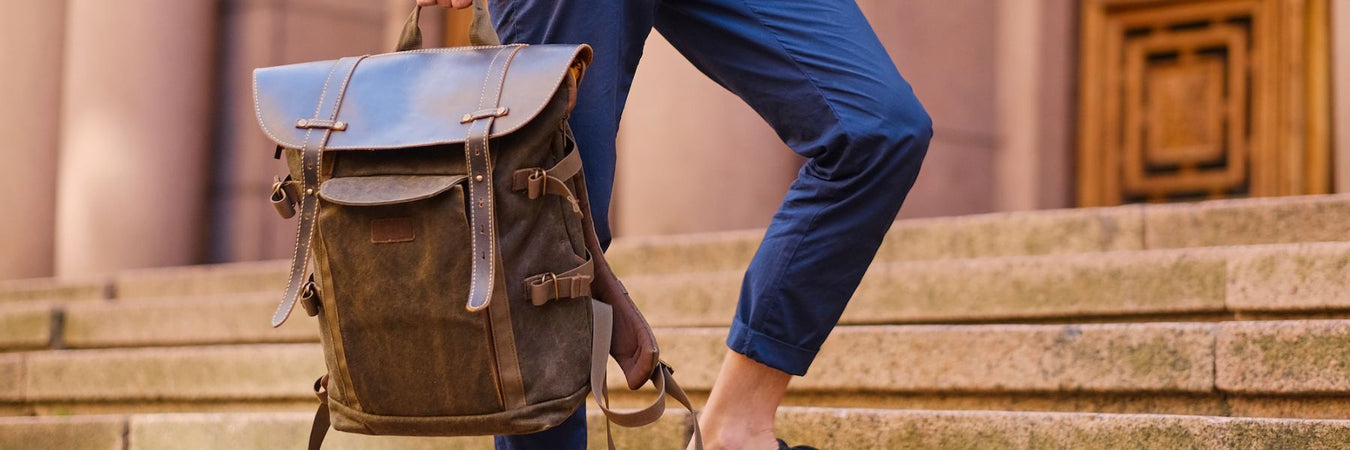
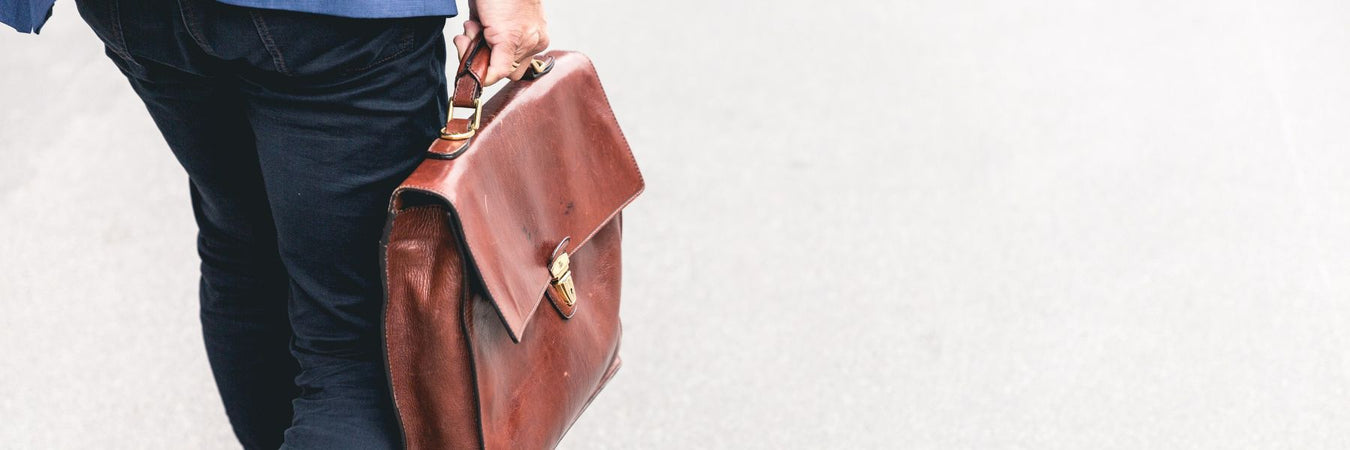
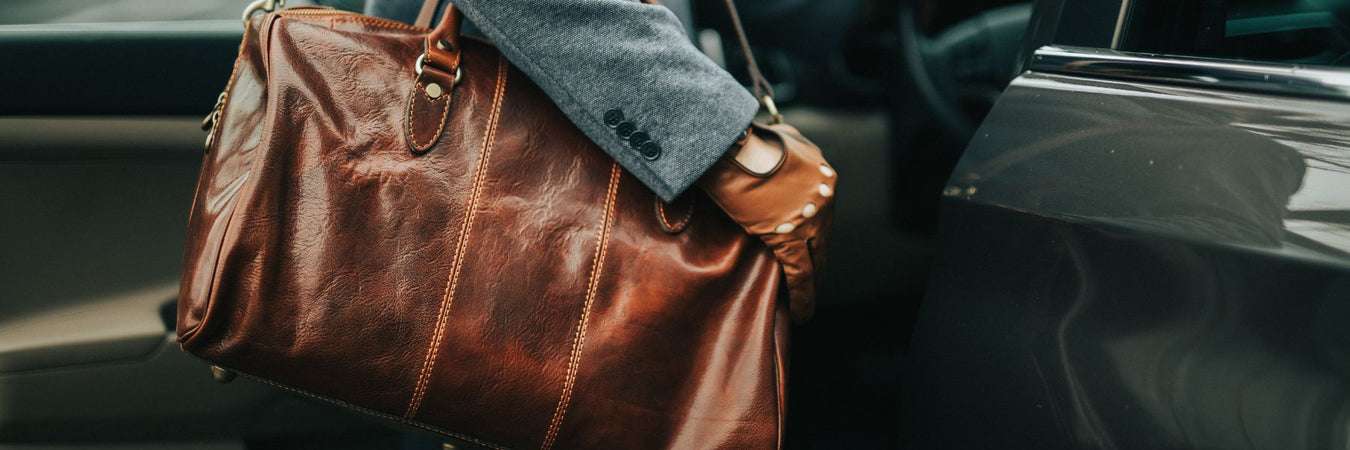
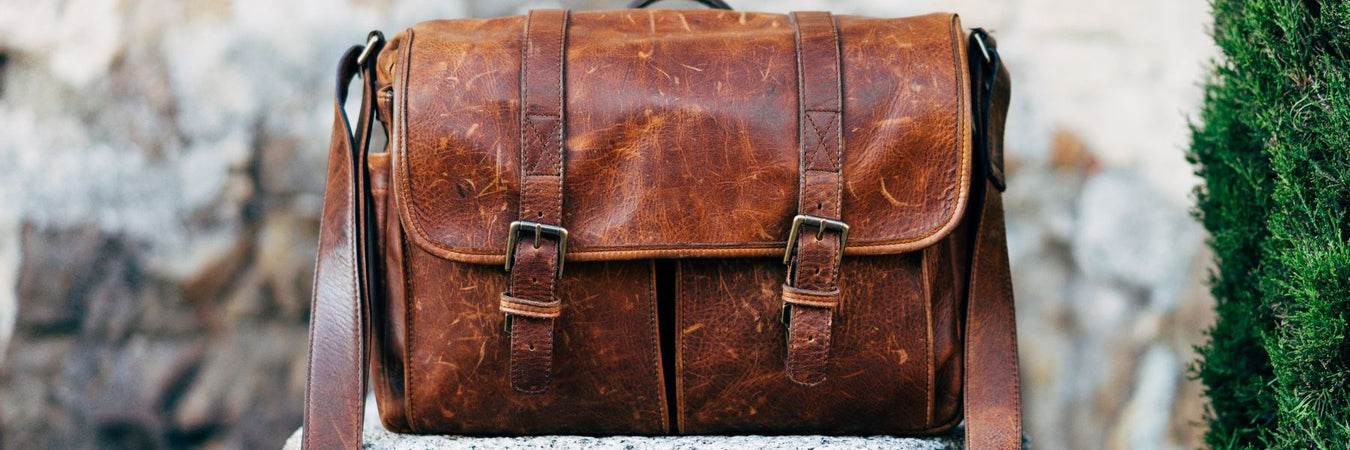
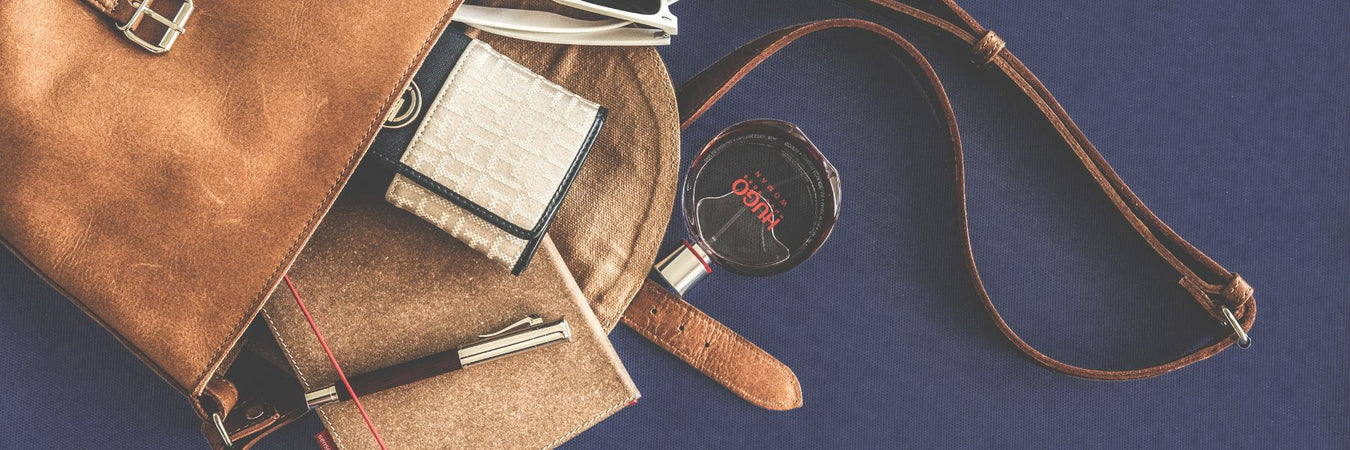
Comments
Leave a comment